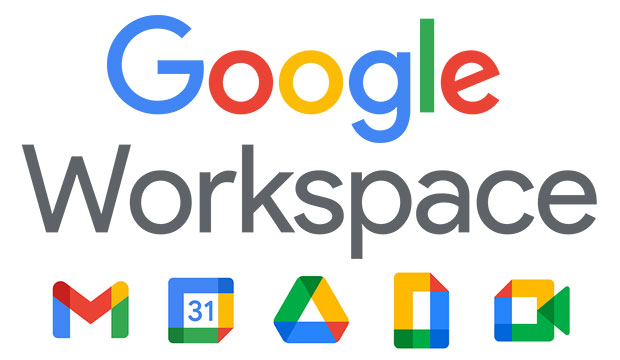Digital Marketing With Google Workspace
Google Workspace is the next step in the G Suite evolution. It’s not even the first time the name has been changed. “Google Apps for Your Domain” was the original name of the service. It was later changed to simply “Google Apps” before being renamed “G Suite” in 2016. According to Google, the term “G Suite” had the undertone of a relatively conventional work setting. It felt like the title needed to reflect the shift in the idea of a workspace. Google Workspace is, at its heart, the same service as G Suite. It’s the culmination of several improvements introduced by Google in the year 2020. The various methods are more closely linked to one another. All are in one place, so you don’t have to switch between Gmail, Docs, Meet, and so on.
On October 6th, 2020, Google introduced us to Google Workspace. It’s a new buddy for productive workers in every industry, putting them together after social distancing has broken them apart. Our pickle was tickled when we learned about Google’s productivity update. After all, Gmail and efficiency are two of our favorite things. We’ve sliced and diced the update like an onion, bringing it down for you to understand precisely what that means for your organization.
What is the purpose of Google Workspace?
The world has changed, as you might have noticed. Our working lives have changed more than anything else. We can’t go to work because we can’t try and solve by the water cooler, rub heads with an impromptu face-to-face brainstorm, or even hopefully enjoy the cupcakes, David, from Accounting’s daughter, produced. Research isn’t going to work anymore. Work is merely the act of carrying out one’s duties. As a result, Google has looked at their current tool to see if they can transform it into a digital office for their customers. Google Workspace was created to promote effective teamwork and to put teams closer together even when they aren’t together.
Google Workspace Can Help You Manage Your Digital Marketing Strategy
Everyone in business understands how difficult it is to run an effective promotional campaign these times. As digital technology advanced, the number of resources we needed to reach customers grew. Putting all of these resources together necessitates installing new communication and interaction software, which only adds to the workload.
Instead of launching new applications, Google has always attempted to bring all of its collaboration, connectivity, collaboration, and cloud apps under one umbrella, known as Google Workspace.
- Adding a sense of familiarity to business correspondence
All who have worked in marketing know that familiarity breeds confidence, and trust breeds sales. But how do you infuse that much-needed sense of familiarity into business emails that are usually stocky and cold? First, take the opportunity to include your profile photo so that consumers can conveniently remember you the next time they receive your mail. Also, make a friendly first impression by opening your emails. Take, for example, Anne from (your Company). To equate your messages with the essence of the character, use unique fonts and other design elements found in Google Workspace.
- Find a simple way to exchange details
Google Workspace is still a work-in-progress, and it has a long road ahead to go before it becomes the game-changing software that Google claims it is. The ability to exchange contacts is one of the features absent from all previous Google suits (as well as the current iteration). Yes, you can do it automatically, but the procedure is much too time-consuming to be helpful in any marketing strategy. Fortunately, downloading a third-party plug-in that easily integrates with your Workspace and eventually allows you to exchange Google connections in bulk with only a few clicks is a simple solution.
- Begin managing campaigns with Google Calendar
Google Calendar has always been a valuable method for time management and processing. However, the software has evolved into a full-fledged project management tool that enables you to build schedules tailored to your marketing strategies, synchronize them with your coworkers, add people to your plan, and delegate tasks. Although these functions can seem simple, they are a free and very effective way always to know what’s going on with your campaign and give your associates some guidance.
- Boost your online presence
Google Sites has to be one of the most valuable additions to the Google productivity suite. And, even though the service has been available to us since 2008, very few businesses are taking full advantage of its benefits. That’s a shame because we’re talking about a beautiful, streamlined, and quick way to build extensible websites. Various giveaways, workshops, fill-in forms, writing entertaining blog posts, and other marketing resources are needed to run an effective marketing strategy. Although Google Sites lacks some more additional features (such as support for custom CSS), it handles these basic tasks quickly and gracefully.
- Successful advertising will help you reach new audiences
Special deals, promotions, or flash sales will help your website advertising stand out. Use strong call-to-action banners and buttons, such as Buy or Book a Table, to attract customers. Video advertisements are an excellent way to attract and engage new consumers while still promoting goods or your business. When making advertisements, aim to keep them under 30 seconds long and highlight your brand in the first few seconds so that viewers don’t forget it. Upload the info on your organization’s official YouTube channel or Sites. Also, keep in mind that your video ad may run without sound for the first few seconds on specific social networking platforms, so think of an order to communicate with viewers during that time.
- Collect consumer reviews on your new product
Build a survey in Forms and insert it in Sites to gather customer feedback while your new product is still in the early stages of growth. When you have a sufficient number of responses, product-marketing management will sort, arrange, and evaluate the data in Sheets to determine the best course of action for the Company.
- Produce high-quality artistic assets and share them with your marketing agency
Job files and directories can be saved in Drive or a shared drive and shared with your agency right away. You can quickly see what files have been modified whenever someone integrates reviews and approvals, and everyone remains on the same page throughout time zones.
Great mobile websites convert visitors into customers, so use Sites to build mobile-friendly websites. First and foremost, make sure your site is mobile-friendly. The pages should adapt to the size of the customer’s local computer. Also, check out your website on a mobile screen. How does it appear? Is it easy to use? Is it possible for visitors to call you with a single tap on your phone number? Then, until you’re ready, utilize ad tools like Google Ads to run text wallets. Consider the terms that prospective customers may use to find you. People prefer to use significantly shorter phrases on mobile devices, so make your keywords quick and appropriate.




